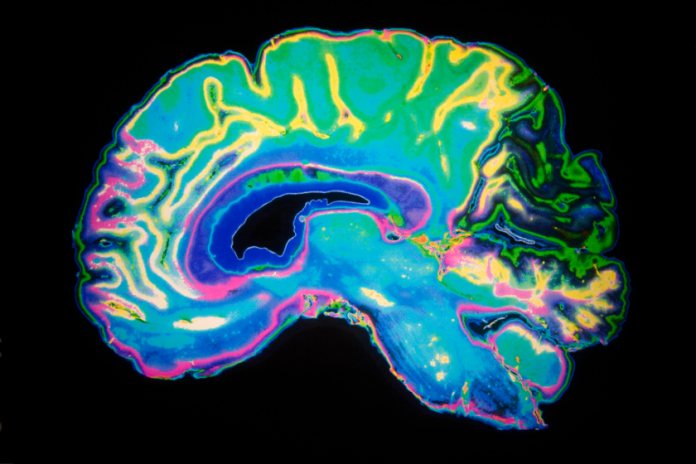
The quest for ways to prevent and treat Alzheimer’s disease has led scientists to explore a wide variety of techniques. One that has been especially interesting is the use of flickering lights, which has been shown to reduce levels of amyloid-beta plaque in the brains of mice. Is this finding, as well as those using pink noise (a mixture of high and low frequencies that is more natural and balanced than white noise), a door to a whole new way to treat Alzheimer’s disease and other neurological conditions?
Li-Huei Tsai, a neuroscientist at Massachusetts Institute of Technology, is one of a growing number of scientists who believe it is. She and her colleagues noted that exposure to a strobe light tuned to 40 hertz has cleared amyloid-beta from the brain. This approach is an example of how brainwave manipulation may be a new way to delay, treat, or even reverse neurological disorders such as Alzheimer’s disease and Parkinson’s disease and perhaps also treat insomnia, schizophrenia, and premenstrual dysphoric disorder.
Read about how pink noise boosts memory and improves sleep
Brainwave manipulation
Numerous research into the effect of brainwaves and their manipulation has shown that they seem to impact conscious perception as well as memory, learning, and other cognitive functions. It’s been shown, for example, that people with Alzheimer’s disease have reduced gamma oscillations, which led Tsai and colleagues to wonder: if they restored gamma-wave activity, what effect would that have on dementia?
Over the years, Tsai and team members have examined this question. At one point they found, for example, that changing the oscillations initiated various events, including better elimination of “garbage” in the brain, such as amyloid-beta. When they exposed older mice with amyloid-beta plaques to flickering LED lights for 60 minutes a day for one week, for example, they saw a 67 percent decline in plaque in the visual cortex when compared with controls. The flashing lights also reduced the amount of another Alzheimer’s hallmark-tau protein.
Read about natural ways to prevent, delay or even reverse Alzheimer’s disease
Because the plaque associated with Alzheimer’s disease tends to affect the hippocampus before it does the visual cortex, Tsai and her colleagues have used pink noise (a 40-hertz sound) and noted a decrease in amyloid in the hippocampus. This may have occurred because the hippocampus is located closer to the auditory cortex than to the visual cortex.
Flashing lights, pink noise and human studies
Promising results in mouse studies are no guarantee they will translate to humans, so Tsai and her colleague Ed Boyden, a neuroscientist at MIT, are testing these treatments in people with Alzheimer’s disease. Other researchers have taken up the call to further explore novel ways to treat Alzheimer’s by stimulating the brain.
One such researcher is Emiliano Santarnecchi at Harvard Medical School, whose team has been using tACS (transcranial alternating current stimulation) to stimulate the brain. He has noted that “this kind of stimulation can target areas of the brain more specifically than sensory stimulation can,” and he is already trying it on Alzheimer’s patients.
Read about 8 links between your diet and Alzheimer’s
One potential problem with the use of flashing lights is that gamma oscillations can induce seizures in people who have photosensitive epilepsy. However, the possibility of using types of neuromodulation such as flashing lights and pink noise instead of pharmaceuticals to treat neurological diseases has excited many researchers and prompted them to explore innovative ways to utilize this technique.
At Northwestern University in Chicago, for example, neurologist Phyllis Zee and her colleagues have delivered pink noise to healthy older adults while they slept. Thus far they have discovered that stimulation prompted a 25 to 30 percent improvement in recall of word pairs when compared with fake treatment. Now the team is checking to see how this approach might help people who have mild cognitive impairment.
Currently, we are faced with a growing number of people at risk of developing Alzheimer’s disease and no proven effective treatment. In the near future, physicians may be treating this disease and other neurological disorders not with drugs but by stimulating the senses with lights and noise.
Sources Cardin JA et al. Driving fast-spiking cells induces gamma rhythm and controls sensory responses. Nature 2009 Jun 4; 459(7247): 663-67
Papalambros NA et al. Acoustic enhancement of sleep slow oscillations and concomitant memory improvement in older adults. Frontiers in Human Neuroscience 2017 Mar 8; 11:109
Thomson H. How flashing lights and pink noise might banish Alzheimer’s, improve memory and more. Nature 2018 Feb 28




